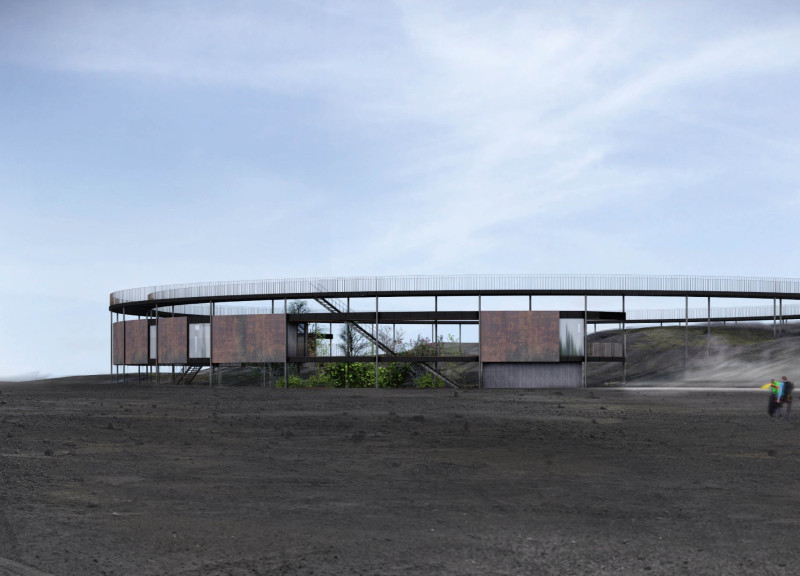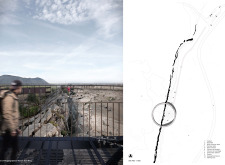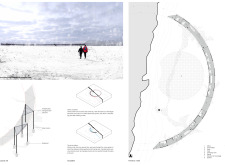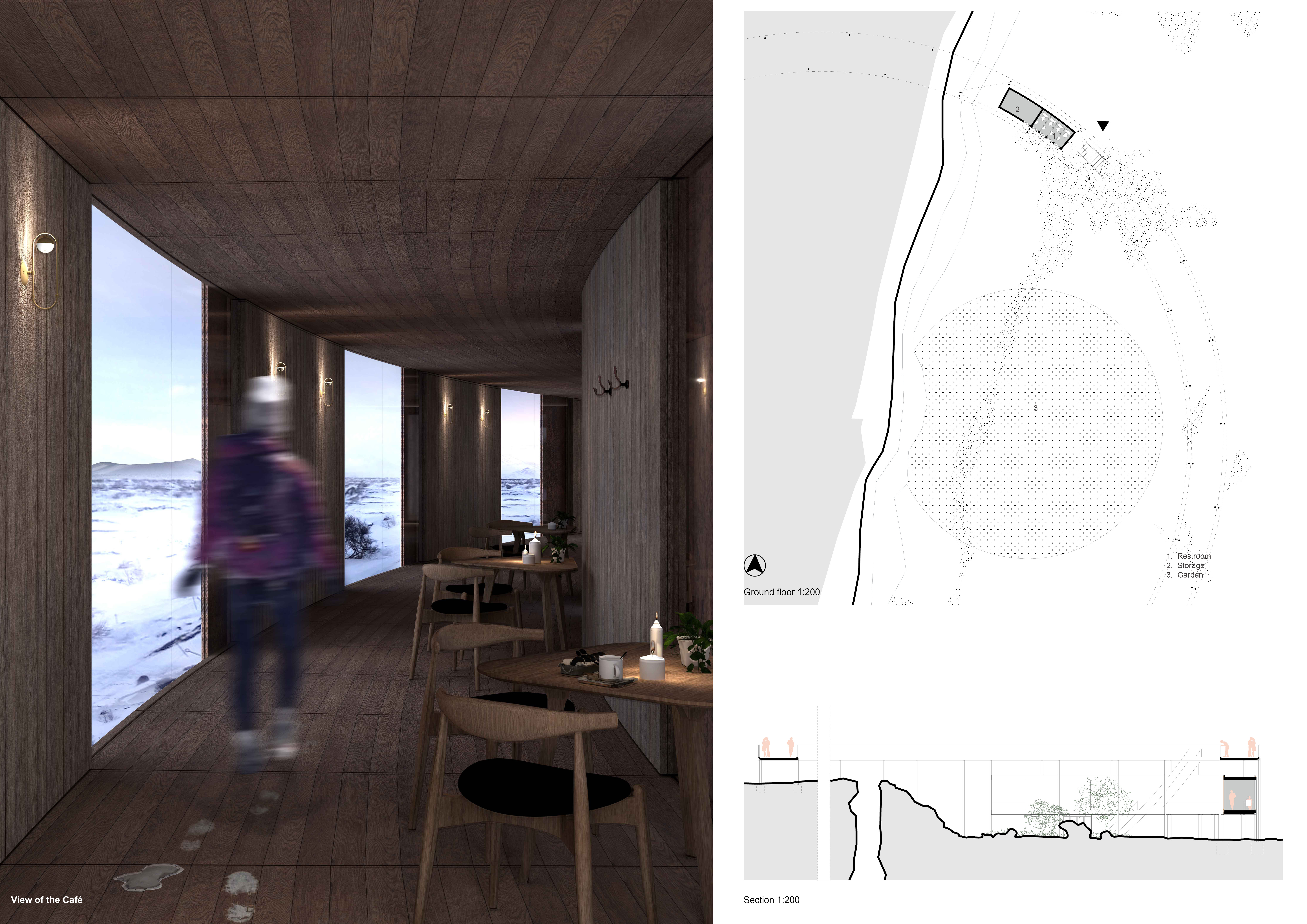5 key facts about this project
The Grjótagjá project is located on the boundary between Europe and North America, an area shaped by geological movement over time. This setting influences the design concept, which aims to enhance visitor experience while respecting the natural landscape. By creating pathways that connect different geological areas, the project encourages exploration and understanding of the geothermal features present in the region.
Site Circulation
The design features a well-organized pathway that guides visitors through the site. Upon arrival, guests enter through a newly designated parking area on the northern side. From there, they are led to a circular walking platform that hovers above a fissure. This pathway forms a direct link between the two tectonic plates, providing an opportunity for visitors to engage with the distinctive landscape.
Observation Platforms
A key element of the design is the observation platform that offers wide views of the surrounding area. Positioned to span both tectonic plates, the platform enhances the visitor's comprehension of the geological context. Being on this platform allows individuals to feel the significance of the geological divide while ensuring their safety as they explore.
Educational Features
The project emphasizes education alongside exploration. Visitors can first explore Karlagjá, a space that adds to their understanding of the geothermal features. The functional areas are mainly found on the European side, making them easy to access. This thoughtful arrangement supports learning about the geological processes shaping the site.
Geothermal Experience
Those interested in the geothermal hot springs find a ticketing area located within a resting zone. This practical detail helps visitors smoothly transition from one area to another, ultimately leading them to the cave area via a thoughtfully designed entrance in the garden.
The design reflects a careful awareness of its geological context. The circular walking platform integrates with the landscape, creating a space where visitors can connect with the tectonic divide and its history. Each element serves to enhance the visitor experience, allowing for deeper interactions with the natural environment.






















































